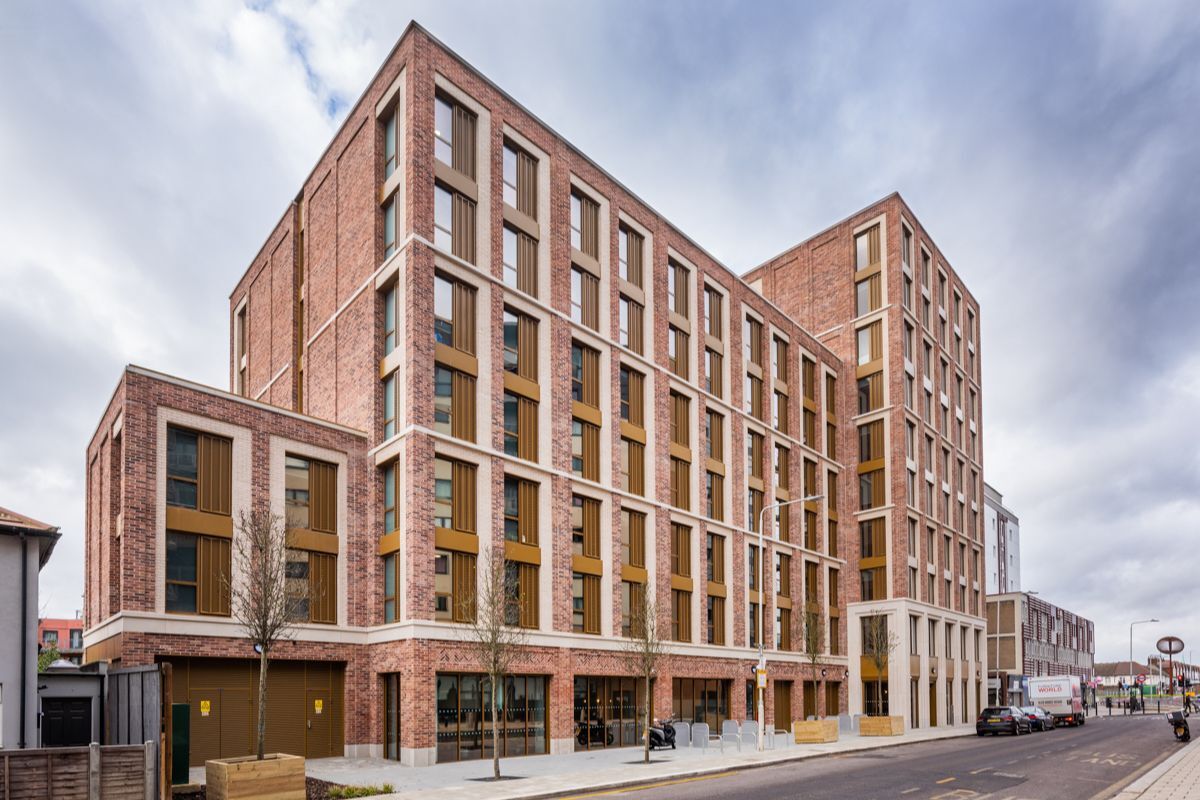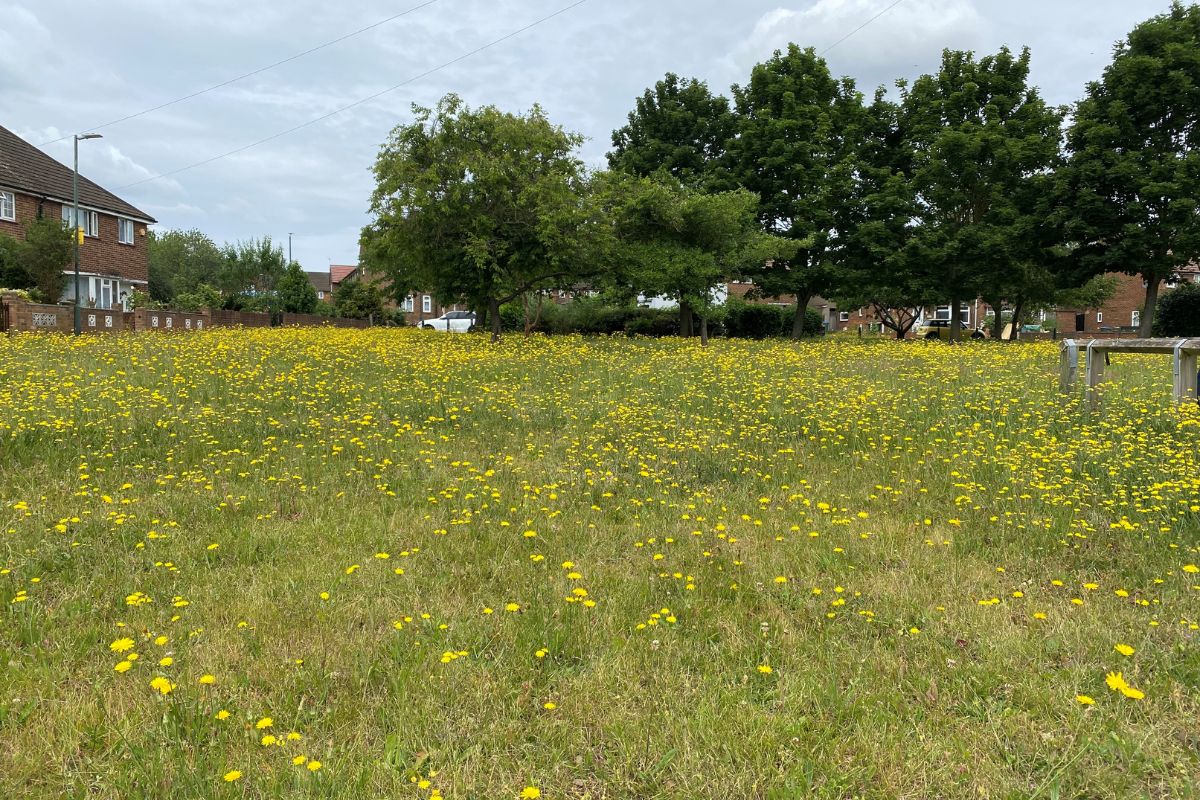Modular construction cuts carbon emissions by up to 45%, academic study finds
Construction using volumetric modular systems – modules precision manufactured offsite – can produce 41-45% less CO2 than traditional methods of building homes, according to a new study by academics from the University of Cambridge and Edinburgh Napier University.
The study of two residential developments delivered by Tide Construction using their modular system comprising a total of 879 homes, found that 28,000 tonnes of embodied carbon emissions were saved from construction across both schemes combined. This is well ahead of industry targets and shows the potential of modular construction to radically reduce the carbon footprint associated with the UK government’s ambition to build 300,000, better quality homes.
Embodied carbon, which is the CO2 produced during the design, construction and decommissioning phases of a development, is dramatically lower when modular systems are used because buildings require less volume of carbon-intensive products such as concrete and steel. The report, “Life Cycle Assessments of The Valentine, Gants Hill, UK and George Street, Croydon, UK” also shows emissions were lower than a traditional approach where all construction takes place on the building site, because indirect carbon emissions such as those caused by deliveries and on-site workers are reduced. Instead, modules are produced ‘offsite’ in a controlled assembly line environment and then taken to site to be assembled efficiently.
Some 11% of global energy-related carbon emissions are from construction materials and processes, (known as embodied carbon), according to the World Green Building Council.
The two distinct developments studied were George Street in Croydon, now known as Ten Degrees, comprising two terracotta-clad towers of 44 and 38 storeys respectively with 546 homes, and The Valentine in Gants Hill, London Borough of Redbridge, a brick-clad 333-bed student accommodation scheme over 10 storeys. The study found that:
- The two schemes achieved embodied carbon savings of 41% and 45% respectively when compared to traditional construction.
- The embodied carbon values of each building are significantly lower than current industry targets set by RIBA and LETI.
Each scheme was selected for the study based on being recently completed and representative of its distinct type, demonstrating the sustainability and versatility of the Vision Modular system across both high-rise and mid-rise buildings.
Both schemes were completed in 2020 in record time by Tide Construction and Vision Modular Systems, with architecture by HTA Design. The George Street development was funded by Greystar and Henderson Park. It is the world’s tallest modular building and provides rented accommodation (known as build-to-rent), while The Valentine was purchased by Crosstree & Outpost.
The research was carried out by Dr Tim Forman, Senior Research Associate at University of Cambridge, Professor Francesco Pomponi and Dr Ruth Saint of Edinburgh Napier University. The study was managed by HTA Design for Tide Construction and Vision Modular Systems.
Christy Hayes, chief executive officer, Tide Construction, said:
“The striking results of this study show that the Vision Modular system can significantly reduce the embodied carbon footprint of buildings. In the UK, modular housing has a huge role to play in ensuring that the government’s ambition to build 300,000 better quality homes per year is achieved faster and more sustainably.
Modular brings investors, occupiers and their professional teams a great opportunity to significantly reduce whole-life carbon emissions, supporting their environmental, social and governance plans and access to green finance.
Tide Construction & Vision Modular commissioned this study to prove the sustainability of our system and to support our continuous efforts to further reduce construction’s carbon footprint.”
Rory Bergin, partner for sustainable futures, HTA Design, said:
“Modular is the future of housebuilding. Two of the biggest challenges our country faces are tackling the climate crisis and the acute shortage of housing. This research shows that only through modular construction, which can deliver low carbon homes quickly and at scale, do we have any chance of meeting both these challenges together.
Building modular homes is quicker, safer, more reliable and more environmentally friendly than traditional housing construction methods. Crucially, Ten Degrees and The Valentine are of the highest possible design quality, meaning Tide Construction and HTA Design are helping to solve the housing crisis by building new homes that people want to live in.”
Dr Tim Forman, senior research associate at University of Cambridge, said:
“Buildings are responsible for approximately 40% of global energy-related carbon emissions, and there is an urgent need to reduce the carbon intensity of construction and buildings in use. As buildings become more energy efficient in operation, reducing the carbon associated with construction -- including the production and transportation of materials and site activities – and their end of life is becoming increasingly signficant. This study underscores the fundamental importance of quantifying carbon in construction and across a building’s life cycle.”
Professor Francesco Pomponi of Napier University, said:
“This study is a truly comprehensive and robust life cycle assessment of the modular solution. The analysis of two residential buildings, each highly representative of its height in terms of function, size and height, was conducted in accordance with the latest carbon assessment guidelines, and analysis was based on conservative assumptions and a careful selection of data inputs. While further studies should be completed to deepen our understanding, the research makes a compelling case for the embodied carbon-saving benefits of modular construction.”



